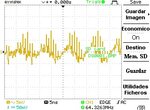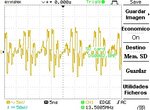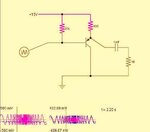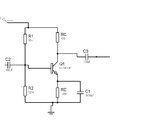Sandthief
Newbie level 6
Good evening. I'm trying to design a single stage BJT amplifier whose input is an electret microphone and its output is a 16 [Ω] headphones.
Here's the circuit so far:
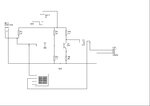
It was calculated for a IcQ=7.9057 [mA]. It also has a Zin = 2.058 [kΩ], Zout = 470 [Ω], AC voltage gain = -0.0678 ans Current gain of -2.8853.
According to the headphones' manufacturer, the impedance is 16 [Ω], and it has a sensitivity rate of 108 [dB/mW]. I've just tested it, and the microphone can't be heard. I have already tested them in the oscilloscope, so I haven't burned them.
My main question is, how do you determine how much current this circuit will need to feed the headphones, when the manufacturer info is quite obscure?
Best regards.
Here's the circuit so far:

It was calculated for a IcQ=7.9057 [mA]. It also has a Zin = 2.058 [kΩ], Zout = 470 [Ω], AC voltage gain = -0.0678 ans Current gain of -2.8853.
According to the headphones' manufacturer, the impedance is 16 [Ω], and it has a sensitivity rate of 108 [dB/mW]. I've just tested it, and the microphone can't be heard. I have already tested them in the oscilloscope, so I haven't burned them.
My main question is, how do you determine how much current this circuit will need to feed the headphones, when the manufacturer info is quite obscure?
Best regards.
